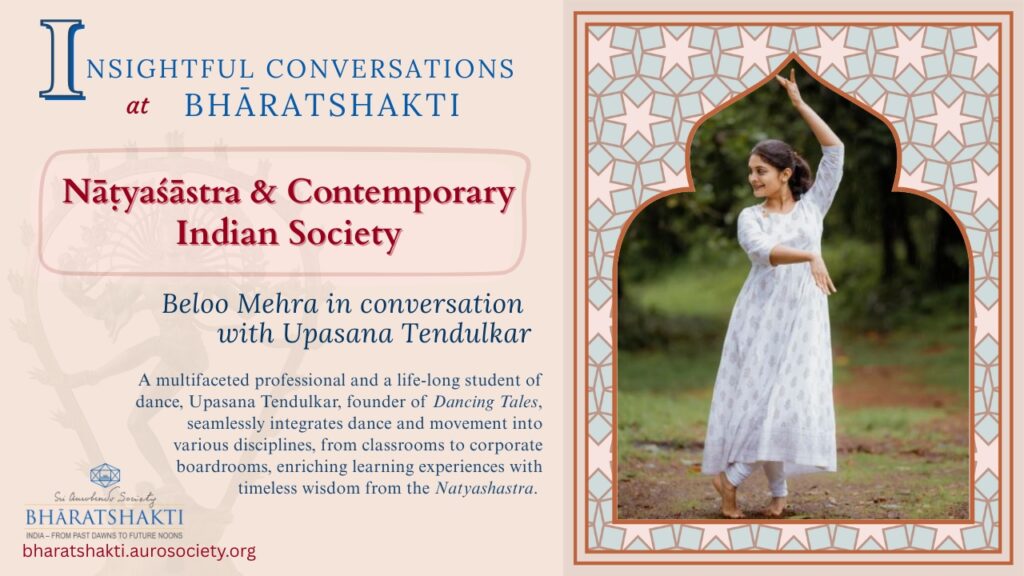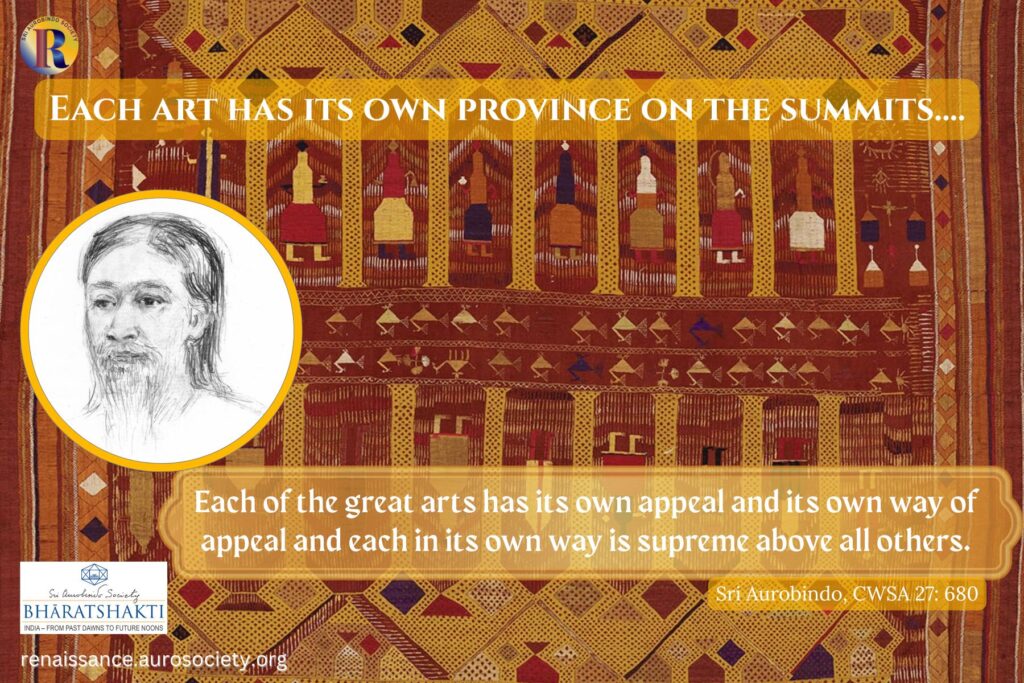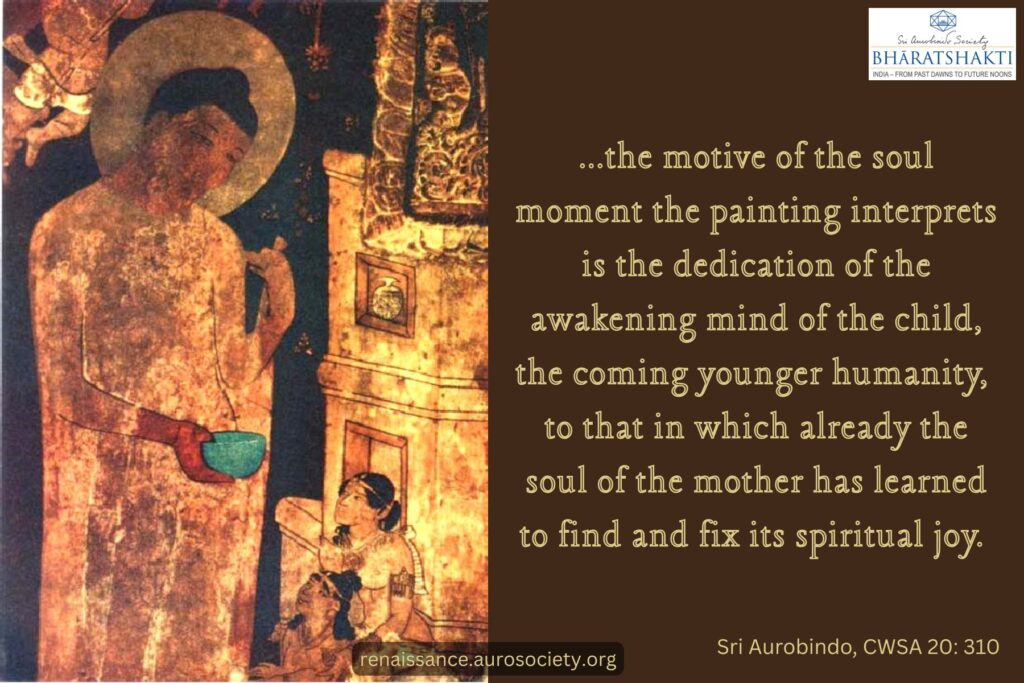Volume V, Issue 11-12
Author: The Mother
Editor’s Note: We feature a conversation of the Mother, dated July 28, 1929. Here she gives a detailed explanation of the relation between Art and Yoga. She speaks of various art forms as well as the changes in the conception of art over time, and also gives relevant examples. The Artist as a Yogi and the Yogi as an Artist — both these aspects are wonderfully explained in these passages.
This is excerpted from CWM, Volume 3, pp. 104-113. We present the conversation in two parts.

PART I
Disciple’s Question
Is it possible for a Yogi to become an artist or can an artist be a Yogi? What is the relation of Art to Yoga?
The Mother’s Response
The two are not so antagonistic as you seem to think. There is nothing to prevent a Yogi from being an artist or an artist from being a Yogi. But when you are in Yoga, there is a profound change in the values of things, of Art as of everything else; you begin to look at Art from a very different standpoint. It is no longer the one supreme all-engrossing thing for you, no longer an end in itself.
Art is a means, not an end; it is a means of expression. And the artist then ceases too to believe that the whole world turns round what he is doing or that his work is the most important thing that has ever been done. His personality counts no longer; he is an agent, a channel, his art a means of expressing his relations with the Divine. He uses it for that purpose as he might have used any other means that were part of the powers of his nature.
Disciple’s Question
But does an artist feel at all any impulse to create once he takes up Yoga?
The Mother’s Response
Why should he not have the impulse? He can express his relation with the Divine in the way of his art, exactly as he would in any other.
If you want art to be the true and highest art, it must be the expression of a divine world brought down into this material world. All true artists have some feeling of this kind, some sense that they are intermediaries between a higher world and this physical existence. If you consider it in this light, Art is not very different from Yoga.
But most often the artist has only an indefinite feeling, he has not the knowledge. Still, I knew some who had it; they worked consciously at their art with the knowledge. In their creation they did not put forward their personality as the most important factor; they considered their work as an offering to the Divine, they tried to express by it their relation with the Divine.
This was the avowed function of Art in the Middle Ages. The “primitive” painters, the builders of cathedrals in Mediaeval Europe had no other conception of art. In India all her architecture, her sculpture, her painting have proceeded from this source and were inspired by this ideal. The songs of Mirabai and the music of Thyagaraja, the poetic literature built up by her devotees, saints and Rishis rank among the world’s greatest artistic possessions.
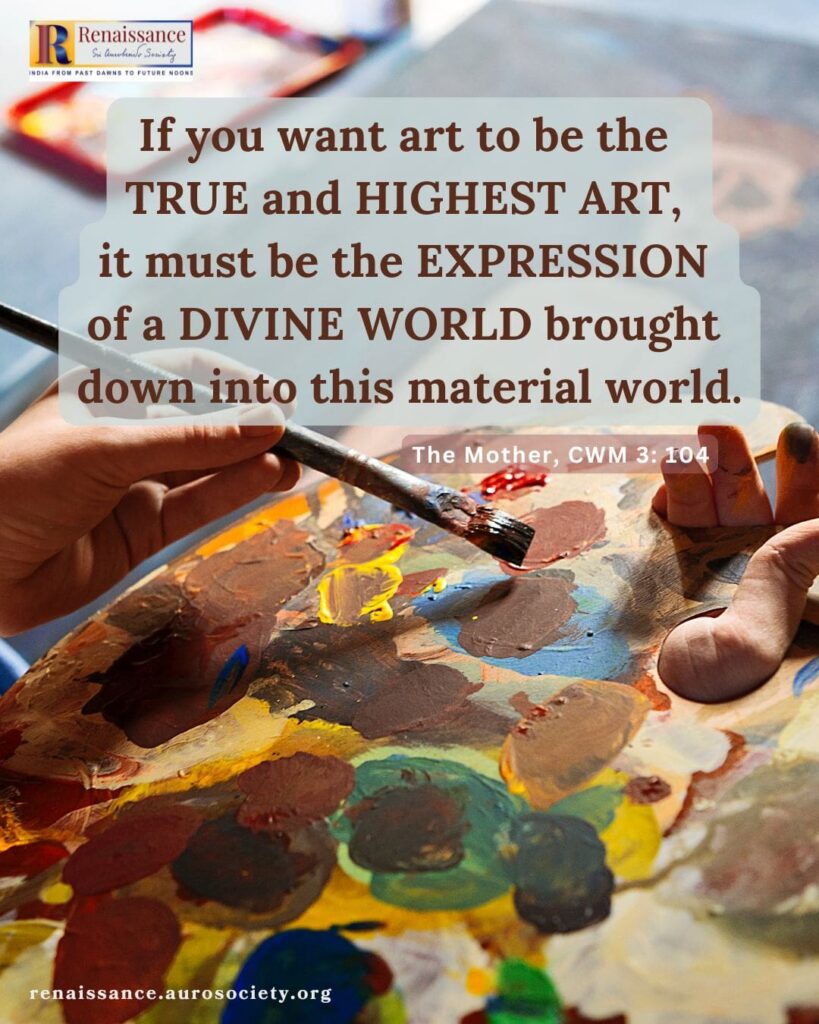
Disciple’s Question
But does the work of an artist improve if he does Yoga?
The Mother’s Response
The discipline of Art has at its centre the same principle as the discipline of Yoga. In both the aim is to become more and more conscious; in both you have to learn to see and feel something that is beyond the ordinary vision and feeling, to go within and bring out from there deeper things.
Painters have to follow a discipline for the growth of the consciousness of their eyes, which in itself is almost a Yoga. If they are true artists and try to see beyond and use their art for the expression of the inner world, they grow in consciousness by this concentration, which is not other than the consciousness given by Yoga. Why then should not Yogic consciousness be a help to artistic creation?
I have known some who had very little training and skill and yet through Yoga acquired a fine capacity in writing and painting. Two examples I can cite to you.
One was a girl who had no education whatever; she was a dancer and danced tolerably well. After she took up Yoga, she danced only for friends; but her dancing attained a depth of expression and beauty which was not there before. And although she was not educated, she began to write wonderful things; for she had visions and expressed them in the most beautiful language. But there were ups and downs in her Yoga, and when she was in a good condition, she wrote beautifully, but otherwise was quite dull and stupid and uncreative.
The second case is that of a boy who had studied art, but only just a little. The son of a diplomat, he had been trained for the diplomatic career; but he lived in luxury and his studies did not go far. Yet as soon as he took up Yoga, he began to produce inspired drawings which carried the expression of an inner knowledge and were symbolic in character; in the end he became a great artist.
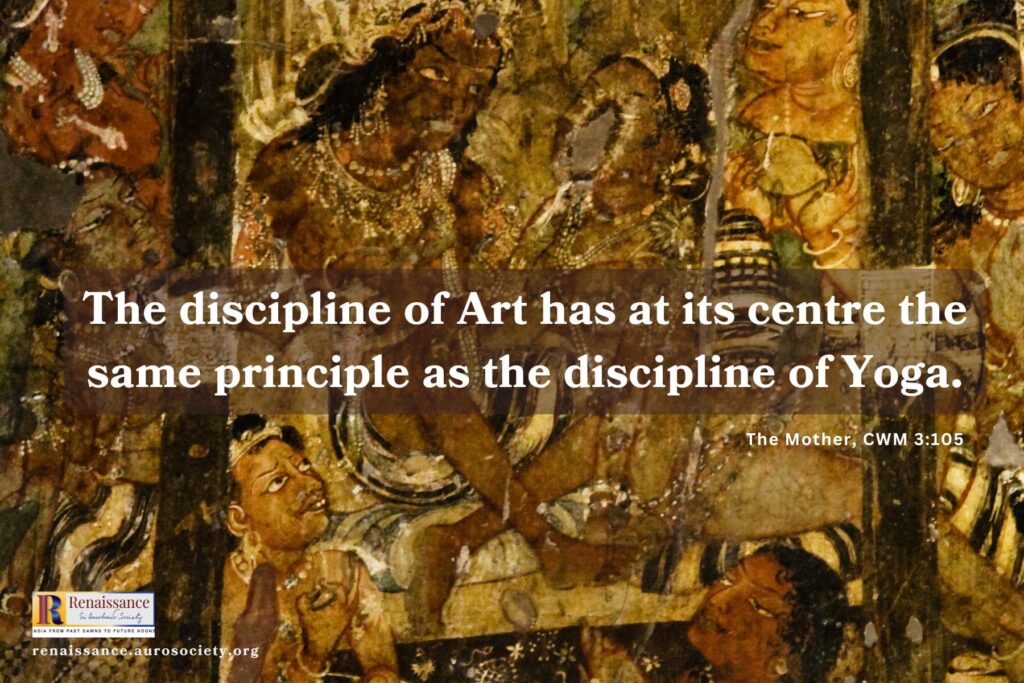
[…]
There is one way in which Yoga may stop the artist’s productive impulse. If the origin of his art is in the vital world, once he becomes a Yogi he will lose his inspiration or, rather, the source from which his inspiration used to come will inspire him no more, for then the vital world appears in its true light; it puts on its true value, and that value is very relative.
Most of those who call themselves artists draw their inspiration from the vital world only; and it carries in it no high or great significance. But when a true artist, one who looks for his creative source to a higher world, turns to Yoga, he will find that his inspiration becomes more direct and powerful and his expression clearer and deeper. Of those who possess a true value the power of Yoga will increase the value, but from one who has only some false appearance of art even that appearance will vanish or else lose its appeal.
To one earnest in Yoga, the first simple truth that strikes his opening vision is that what he does is a very relative thing in comparison with the universal manifestation, the universal movement.
But an artist is usually vain and looks on himself as a highly important personage, a kind of demigod in the human world. Many artists say that if they did not believe what they do to be of a supreme importance, they would not be able to do it. But I have known some whose inspiration was from a higher world and yet they did not believe that what they did was of so immense an importance. That is nearer the spirit of true art.
If a man is truly led to express himself in art, it is the way the Divine has chosen to manifest in him, and then by Yoga his art will gain and not lose. But there is all the question: is the artist appointed by the Divine or self-appointed?
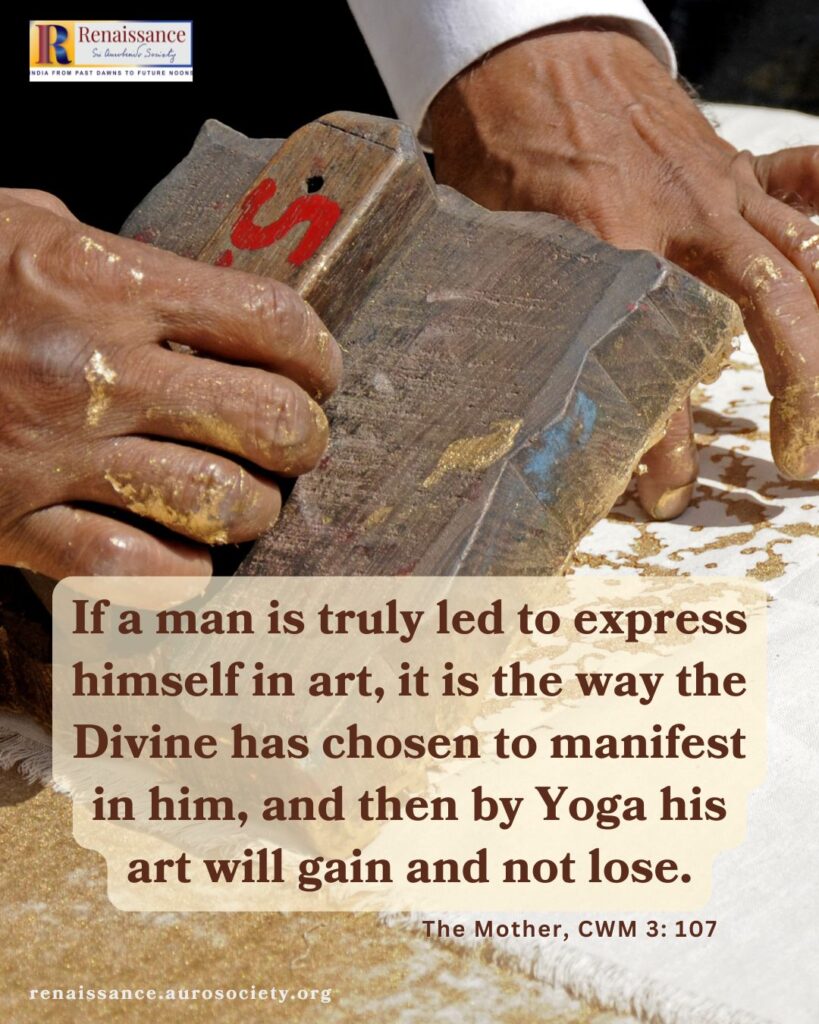
Disciple’s Question
But if one does Yoga can he rise to such heights as Shakespeare or Shelley? There has been no such instance.
The Mother’s Response
Why not? The Mahabharata and Ramayana are certainly not inferior to anything created by Shakespeare or any other poet, and they are said to have been the work of men who were Rishis and had done Yogic tapasyā. The Gita which, like the Upanishads, ranks at once among the greatest literary and the greatest spiritual works, was not written by one who had no experience of Yoga. And where is the inferiority to your Milton and Shelley in the famous poems written whether in India or Persia or elsewhere by men known to be saints, Sufis, devotees?
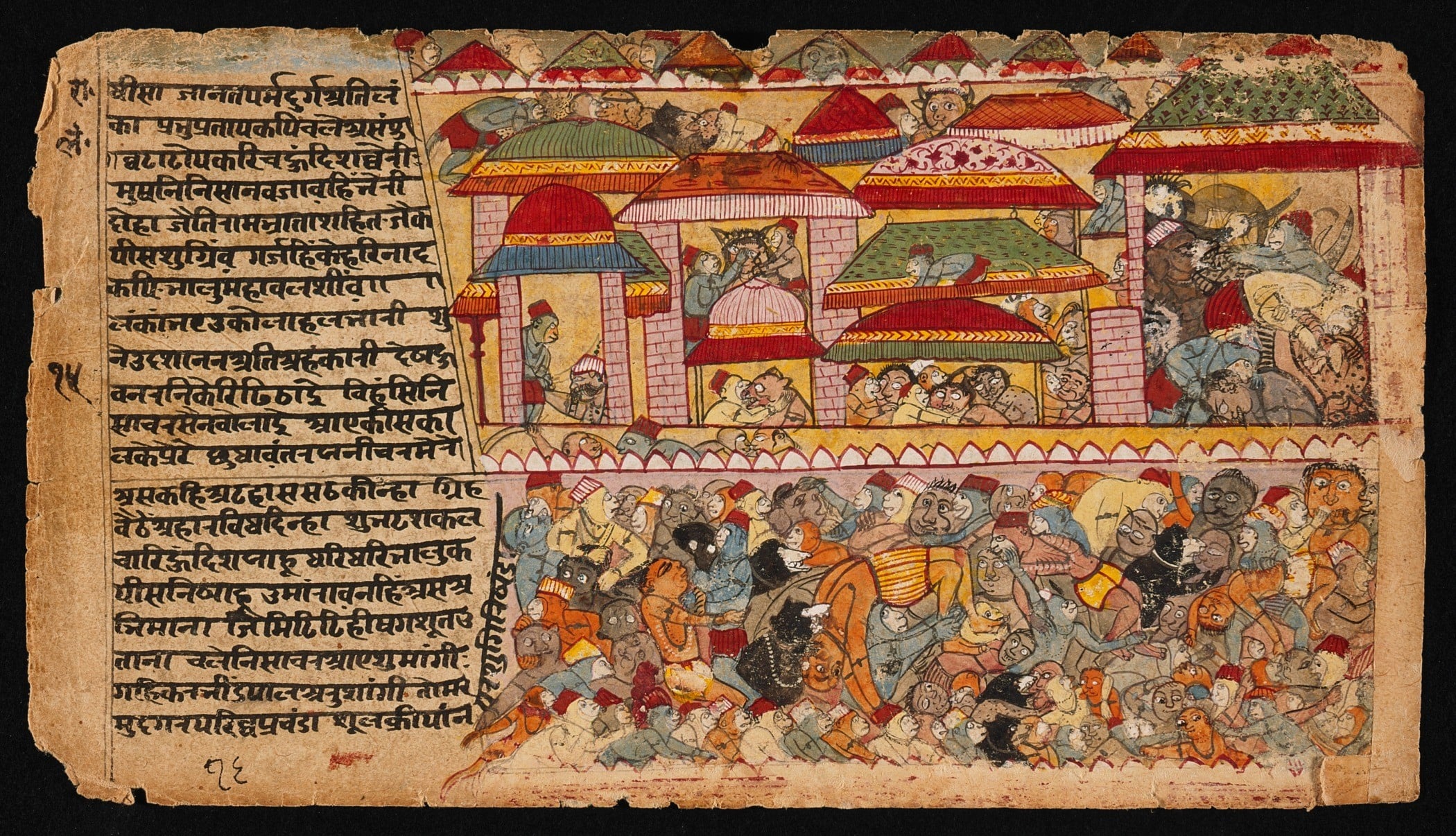
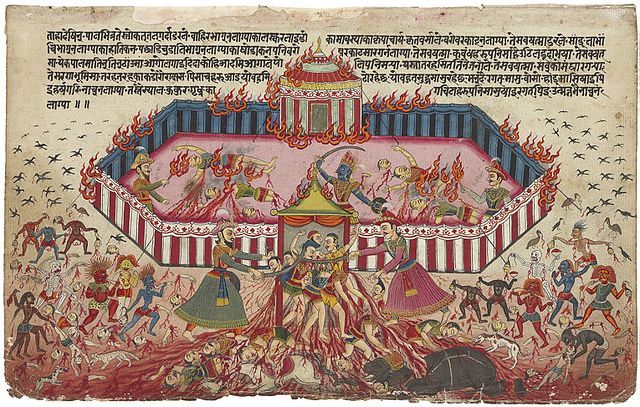
And, then, do you know all the Yogis and their work? Among the poets and creators can you say who were or who were not in conscious touch with the Divine? There are some who are not officially Yogis, they are not gurus and have no disciples; the world does not know what they do; they are not anxious for fame and do not attract to themselves the attention of men; but they have the higher consciousness, are in touch with a Divine Power, and when they create they create from there.
The best paintings in India and much of the best statuary and architecture were done by Buddhist monks who passed their lives in spiritual contemplation and practice; they did supreme artistic work, but did not care to leave their names to posterity.
The chief reason why Yogis are not usually known by their art is that they do not consider their art-expression as the most important part of their life and do not put so much time and energy into it as a mere artist. And what they do does not always reach the public. How many there are who have done great things and not published them to the world!
Continued in Part II
~ Content Research & Design: Beloo Mehra

